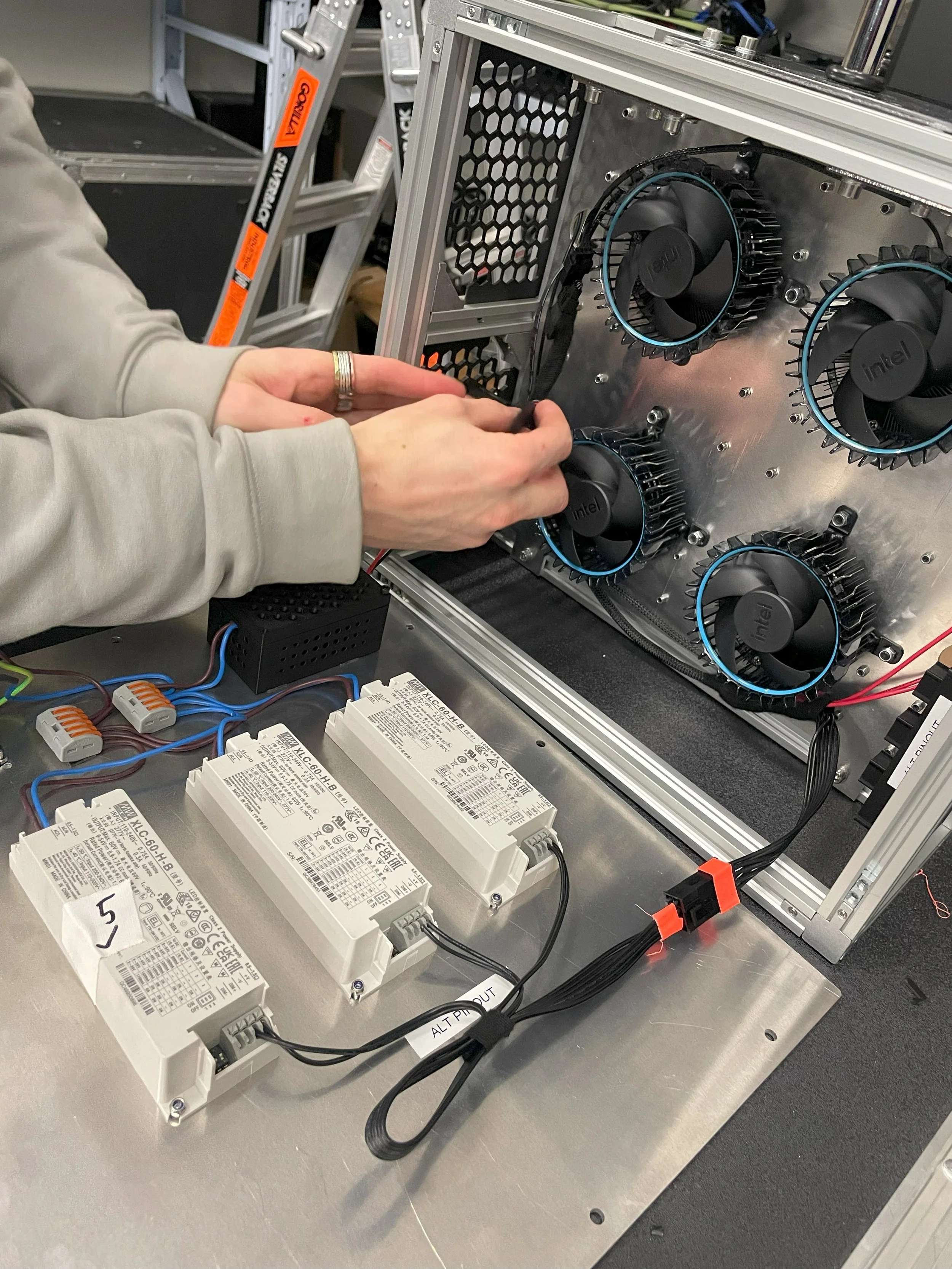Spectral Matte
Infrared background removal technique
Developed in partnership with O2D
Built out of the desire for an alternative to traditional green screen keying, our spectral matte technique uses the IR spectrum as the source for background removal. This way, the visible spectrum image is never altered/keyed; instead, the IR image used for background removal is captured via an additional camera.
This technique enables filming any range of colours in a single shot without adjusting the lighting setup or changing the background colour. In the example on the right, the material is both iridescent and semi-transparent. As the material moves, it reflects different hues of blue and green, a feature that would be impossible to key on a green screen. This was one of 40 garments we shot in a single day using this technique for World of WearableArt.
Credits:
Olivier Jean (O2D)
Delainy Jamahl (Artificial Imagination, O2D)
Just like green screen techniques, the lighting still needs to be carefully controlled to achieve the best results. Our main challenge here was that there we’re no high powered IR lights appropriate for film production available to us. Being the curious technologists we are, we decided the best course of action was to build our own.
With a combination of 30w IR LEDs, laser cut aluminum, extrude, 3D printing, intel PC fans and a bunch of misc parts we built 6x 270w IR floods to light our backdrop.
Thanks to Portsmouth Rentals for supplying the cameras and beam splitter for our initial testing and shoot days
We used two RED Helium 8k cameras, whilst a reasonably dated camera in 2025 they have an interchangeable OLPF filter, allowing us to use an IR OLPF in front of the sensor, removing any potential limitation with lens selection and having filters in front of the lens.
Both cameras point into the beam splitter, with the optical element at a 45° angle. This element passes 50% of the light through and reflects the other 50%. The bottom camera views the visible spectrum through the beam splitter, while the top camera views the IR spectrum reflected by the beam splitter.
Both cameras are synchronised via timecode and genlock to ensure they are capturing the same image at the same time.









